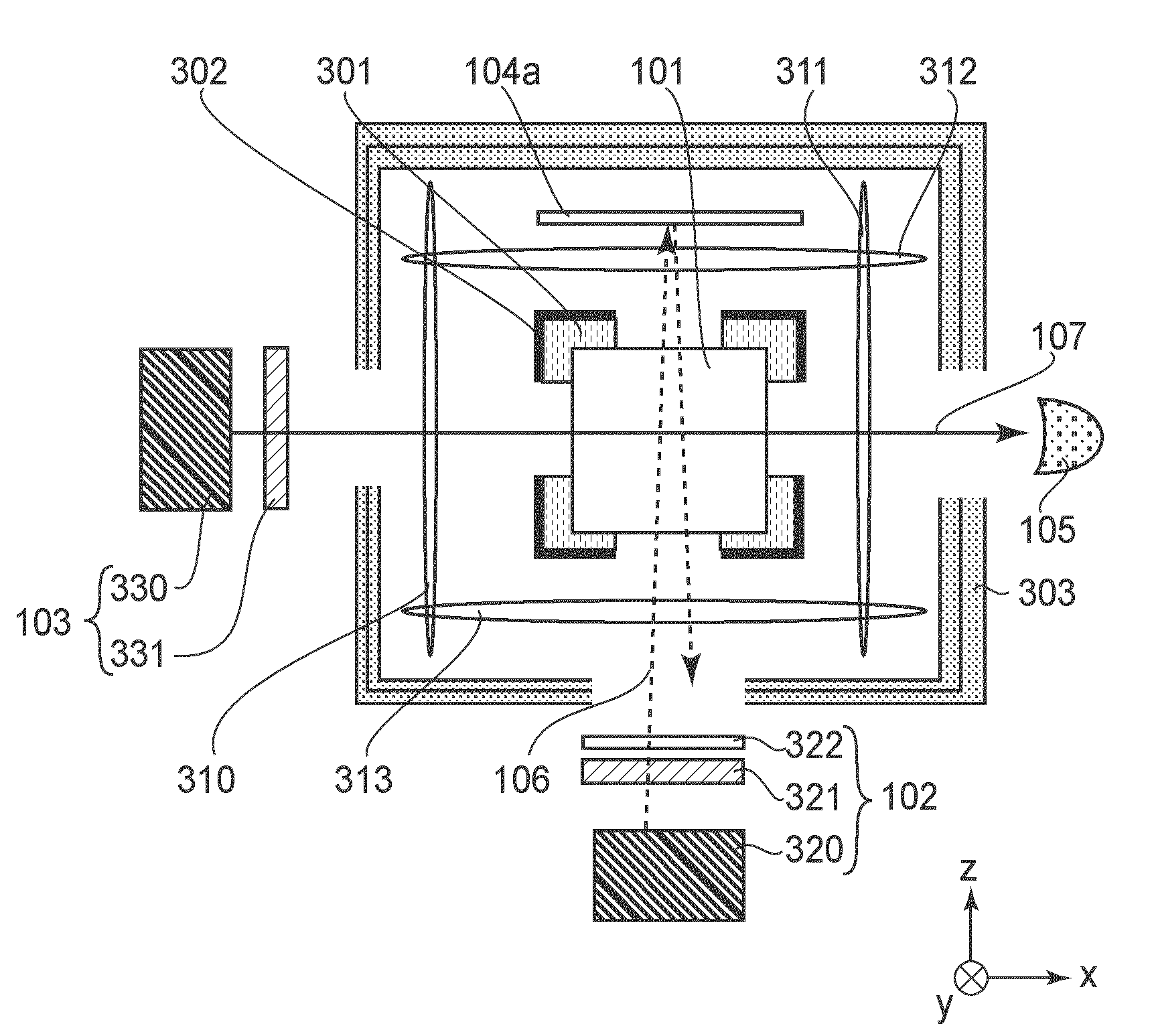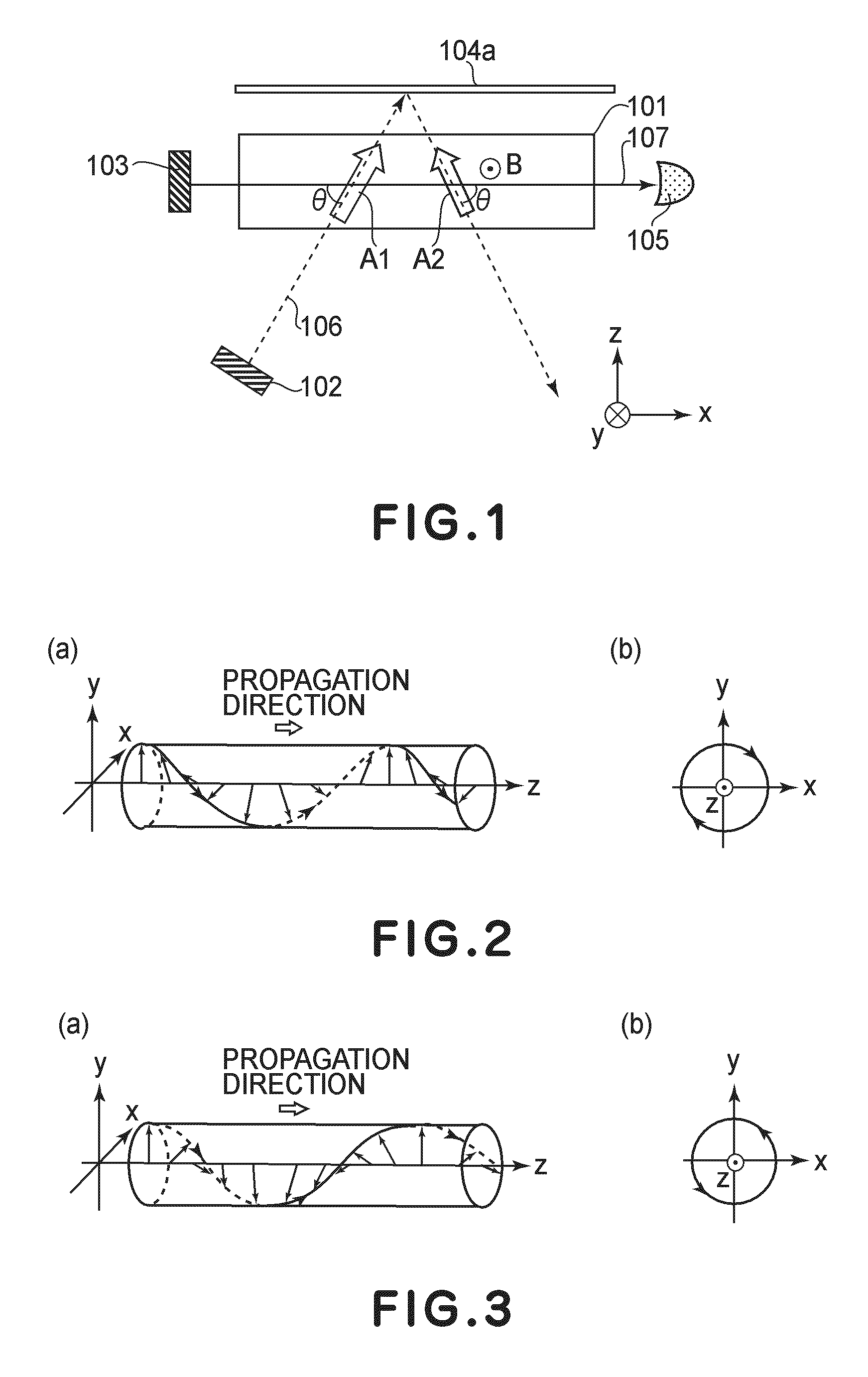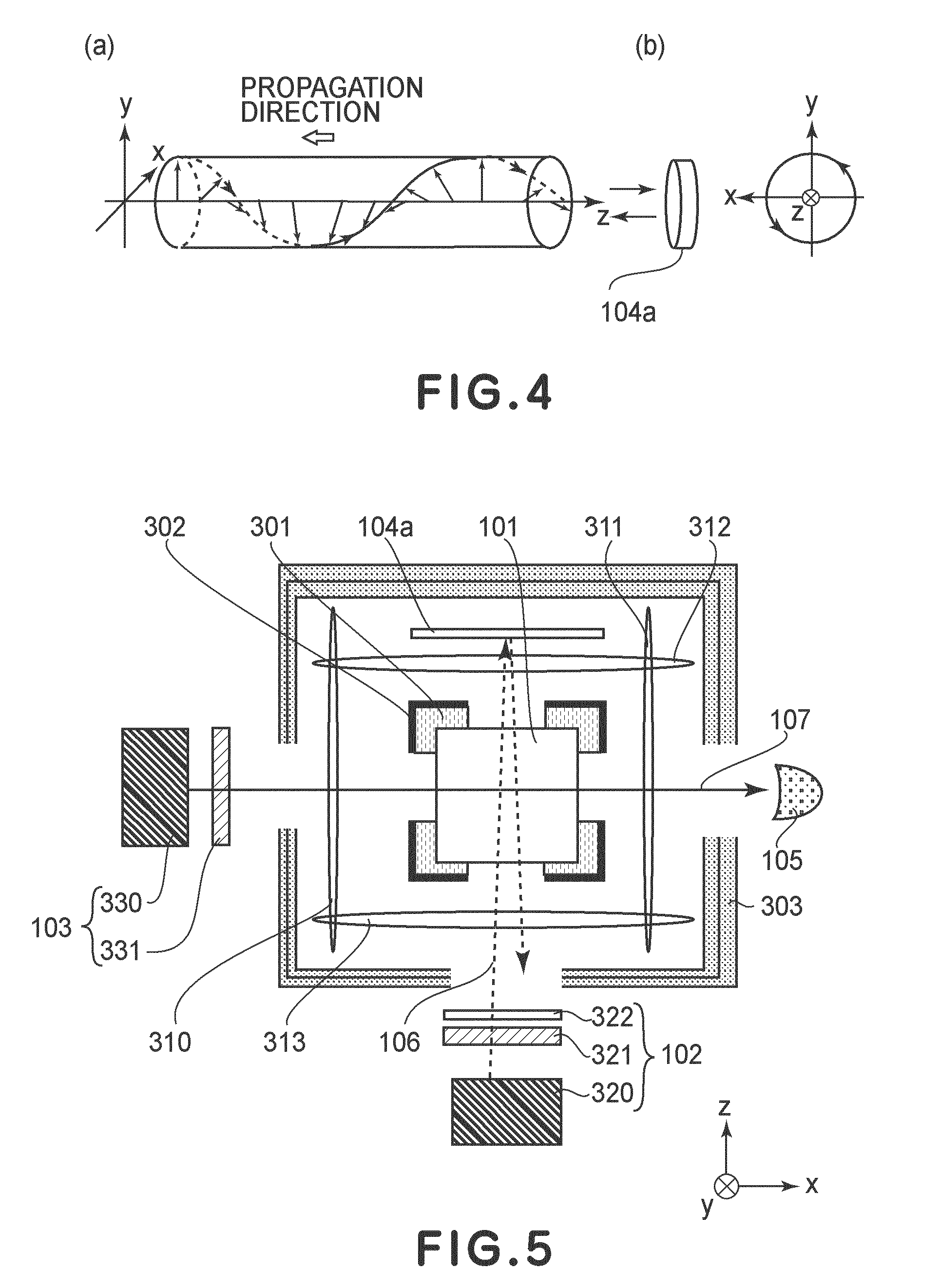Atomic magnetometer and magnetic force measuring method
a magnetometer and magnetic force technology, applied in the field of magnetometers, can solve the problems of difficult removal of magnetic noise, low sensitivity to magnetic field detection, and difficulty in distinguishing the presence of magnetic noise from the output signal, and achieve the effect of high sensitivity to detect magnetic field
- Summary
- Abstract
- Description
- Claims
- Application Information
AI Technical Summary
Benefits of technology
Problems solved by technology
Method used
Image
Examples
first embodiment
[0036]FIG. 1 is a schematic view showing an atomic magnetometer according to this embodiment.
[0037]The atomic magnetometer includes a cell 101 containing an atomic group (atoms), a light source for a pump beam (pump light source) 102, a light source for a probe beam (probe light source) 103, a first mirror 104a, and a detector 105.
[0038]The cell 101 is disposed between the pump light source 102 and the first mirror 104a and between the probe light source 103 and the detector 105. The first mirror 104a is placed in an optical path of the cell 101.
[0039]A pump beam 106 emitted from the pump light source 102 is circularly polarized light. The pump beam 106 passes through the cell 101 and is reflected by the first mirror 104a and then passes through the cell 101 again. In FIG. 1, an incident angle of the pump beam 106 with respect to the first mirror 104a is indicated as a large angle but actually the incident angle is small, so that an optical path of incident light and an optical path...
embodiment 1
[0116]FIG. 5 is a schematic sectional view for illustrating an optical pumping magnetometer (atomic magnetometer) according to this embodiment.
[0117]The atomic magnetometer of this embodiment includes the cell 101 containing the atomic group, the pump light source 102, the probe light source 103, the first mirror 104a, and the detector 105.
[0118]The cell 101 is disposed between the pump light source 102 and the first mirror 104a and between the probe light source 103 and the detector 105. The optical path of the probe beam 107 crosses the optical path of the pump beam 106 in the cell 101.
[0119]The pump beam 106 emitted from the pump light source 102 is the circularly polarized light. The pump beam 106 passes through the cell 101 and is reflected by the first mirror 104a and thereafter passes through the cell 101 again.
[0120]The probe beam 107 emitted from the probe light source 103 is the linearly polarized light. The probe beam 107 propagates in a direction (x-direction in FIG. 5) ...
embodiment 2
[0164]FIG. 9 is a schematic sectional view for illustrating an optical atomic magnetometer according to this embodiment.
[0165]The atomic magnetometer of this embodiment includes the cell 101 containing the atomic group, the pump light source 102, the probe light source 103, and the detector 105. The atomic magnetometer further includes the first mirror 104a and a second mirror 104b.
[0166]The cell 101 is disposed between the pump light source 102 and the first mirror 104a and between the probe light source 103 and the detector 105.
[0167]The second mirror 104b is disposed between the cell 101 and the pump light source 102. Specifically, the second mirror 104b is disposed somewhat rightwardly in FIG. 9 so as not to overlap an optical axis of the pump light source 102.
[0168]The first mirror 104a and the second mirror 104b are provided in parallel to each other. The cell 101 is provided between the first mirror 104a and the second mirror 104b. As the first mirror 104a and the second mir...
PUM
 Login to View More
Login to View More Abstract
Description
Claims
Application Information
 Login to View More
Login to View More - R&D
- Intellectual Property
- Life Sciences
- Materials
- Tech Scout
- Unparalleled Data Quality
- Higher Quality Content
- 60% Fewer Hallucinations
Browse by: Latest US Patents, China's latest patents, Technical Efficacy Thesaurus, Application Domain, Technology Topic, Popular Technical Reports.
© 2025 PatSnap. All rights reserved.Legal|Privacy policy|Modern Slavery Act Transparency Statement|Sitemap|About US| Contact US: help@patsnap.com



